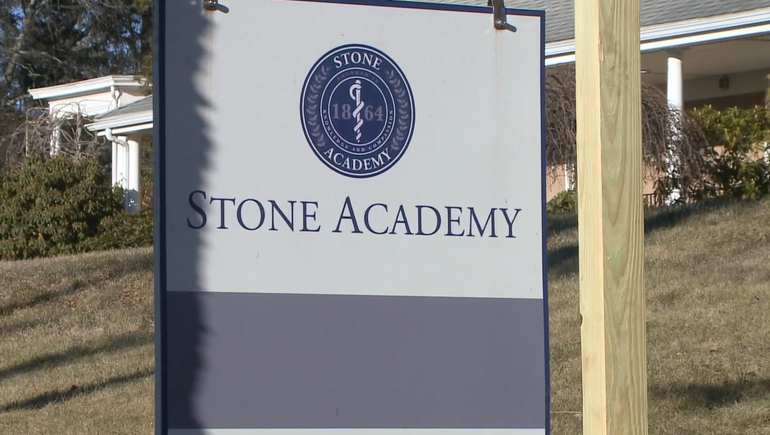[ad_1]
Ricardo Azziz has held numerous executive positions in higher education and led the merger that resulted in Georgia Regents University, now Augusta University. He is principal at Strategic Partnerships in Higher Education Consulting Group.
He writes the regular Merger Watch opinion series on corporate restructuring in higher education.
It is no secret that higher education employees are unhappy with the industry. A recent CUPA-HR report noted that among 4,782 higher ed employees surveyed, 56.2% were at least somewhat likely to look for new employment opportunities in the next year, a rise in the number planning to leave compared to 2021’s survey.
Pay matters.

Permission granted by Ricardo Azziz
In fact, 86% of survey respondents reported that wanting an increase in pay was among their top three reasons for seeking new employment. These results suggest higher ed is at risk of experiencing significant employee turnover in the coming year.
This isn’t entirely surprising. The median family income, adjusted for inflation, has dropped for the past three years. The expiration of pandemic-era financial support programs and the rapid rise in inflation have made matters significantly worse for American families, with households last year facing the largest annual cost-of-living increases in over 40 years.
Similarly, pay increases for higher ed workers have not kept pace with inflation.
That’s why a regulatory proposal from the U.S. Department of Labor that would increase the minimum salary threshold for overtime pay eligibility would seem to be welcome — at least by workers. But the rule could create financial burdens for colleges. That’s an added liability that officials will need to start estimating and preparing for immediately.
The DOL proposal would increase the yearly salary threshold for overtime pay eligibility from $35,568 to approximately $55,000. However, the threshold for being eligible for overtime pay could be as high as $60,000, as the cut-off value implemented in the final regulation will be based on the most recent wage data available.
Overtime pay refers to compensation for the time employees work beyond 40 hours in a workweek. The pay must be at a rate of at least 1.5 times their standard compensation. DOL’s proposal would mean that the number of employees qualifying for overtime pay would increase significantly — whether they are currently classified as exempt workers or not. We should note that the rules do not seem to apply to faculty — including athletic coaches and assistant coaches, depending on how much they actually teach — and to student workers, including teaching and research assistants.
Importantly, the proposal also adopts automatic salary threshold increases every three years to reflect current earnings data, which could further increase the number of employees that qualify for overtime pay in the years to come. The rules were open for public comment through Nov. 7 and are awaiting finalization.
In a nutshell, the new DOL overtime pay rules mean that employees making between roughly $35,000 and $55,000 yearly, whether hourly or not, would qualify for overtime pay. The DOL has estimated the rule would extend overtime protections to roughly 3.6 million salaried workers — a number that could grow if the threshold continues to increase.
Considering that the median staff salaries for colleges and universities in 2019-20 ranged from $27,000 to $59,000, the number of employees affected in higher education could be significant, particularly as personnel is the single largest line item in most higher ed budgets.
It is unclear how much the new DOL regulations would impact the expected increase in employee turnover in higher education.
While the CUPA-HR survey flagged pay as an important driver for leaving, it is also important to note that the survey has its limitations.
Approximately 40% of the CUPA-HR survey respondents were supervisors and more than 50% were either in administration, human resources, student affairs or academic affairs. These are units which will likely be less impacted by the new DOL overtime pay rules, as we can assume that most of these employees would be earning above the threshold.
Despite the obvious benefit for many staff members, it is clear the new overtime regulations will add to the expenses of higher education institutions. That’s on top of the existing threats of excess capacity, changing demographics, increasing geographic competition, and decreasing willingness of students and their families to accept continuing tuition and fee increases.
The added burden of increasing staff salaries will only worsen the forecast for many colleges and universities.
The impact will be felt most by smaller institutions of higher education, i.e., those less than 5,000 students. In the U.S., smaller institutions account for around 75% of all colleges and universities.
In this column, I have repeatedly stated that most colleges and universities should incorporate consideration of a merger (aka acquisition or consolidation) into their regular strategic assessments. Whether to pursue one should come after carefully considering alternatives, as well as clearly assessing the institution’s long-term prospects and the current and future industry landscape.
Pursuing or exploring a merger should occur sooner rather than later — before their financial, enrollment and branding assets are exhausted. A merger is not only a tactic to enhance institutional survival, but it is also a chance for colleges to preserve their history and heritage, to reenergize their campuses and their branding, to grow and expand their academic offerings, to improve student access and success, and to enhance their competitiveness.
The potential financial stress from the pending DOL rules should serve as a further call to action for many institutions in our nation, particularly those that are smaller, are experiencing declining enrollment, or are financially fragile. The coming regulations will only exacerbate the fragility of many institutions that are already financially precarious.
Further complicating the picture is the U.S. Department of Education’s new policies on reviewing and approving college mergers, which can lead to further complexity and delay in having the merger approved.
The time to begin exploring a merger in earnest, whether for institutional sustainability, programmatic growth or both, is now — more than ever.
Clarification: This article has been updated to more clearly reflect which employees would be impacted by the DOL’s proposed rule.
[ad_2]









